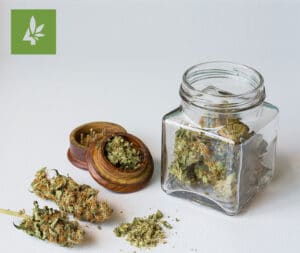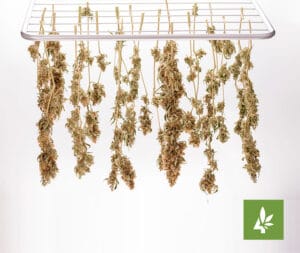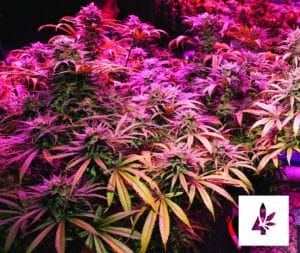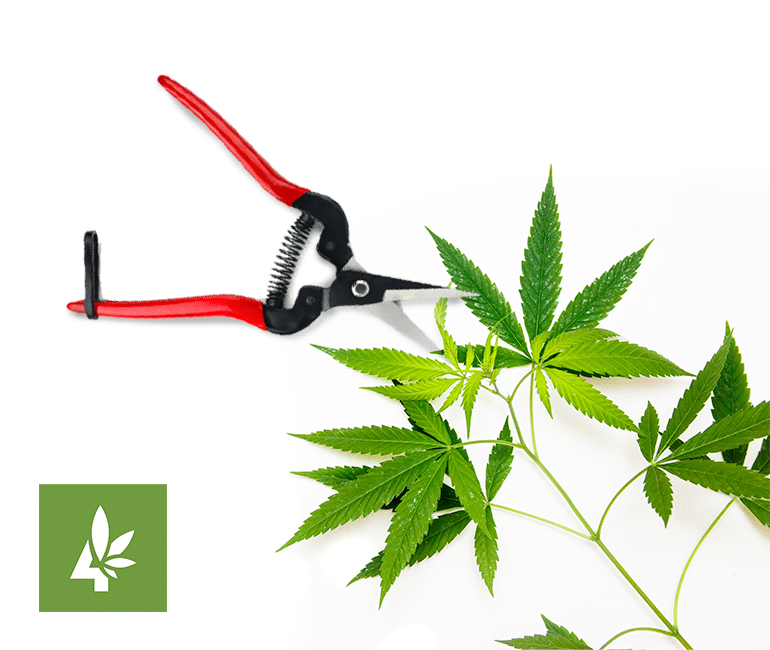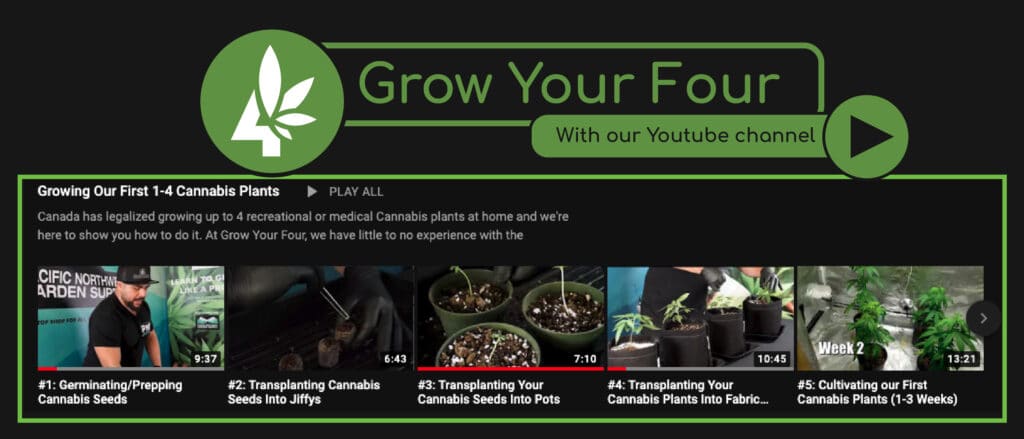While not as important as genetics, environmental controls, or stable nutrition, plant “shaping” techniques like topping, lollipopping, and pruning can benefit cannabis crops in amazing ways. For example, correctly shaping plants can increase yields, quality, and performance during the flowering stage. With these benefits in mind, let’s look at some of the tips, tools, and procedures necessary for shaping cannabis plants during the vegetative stage.
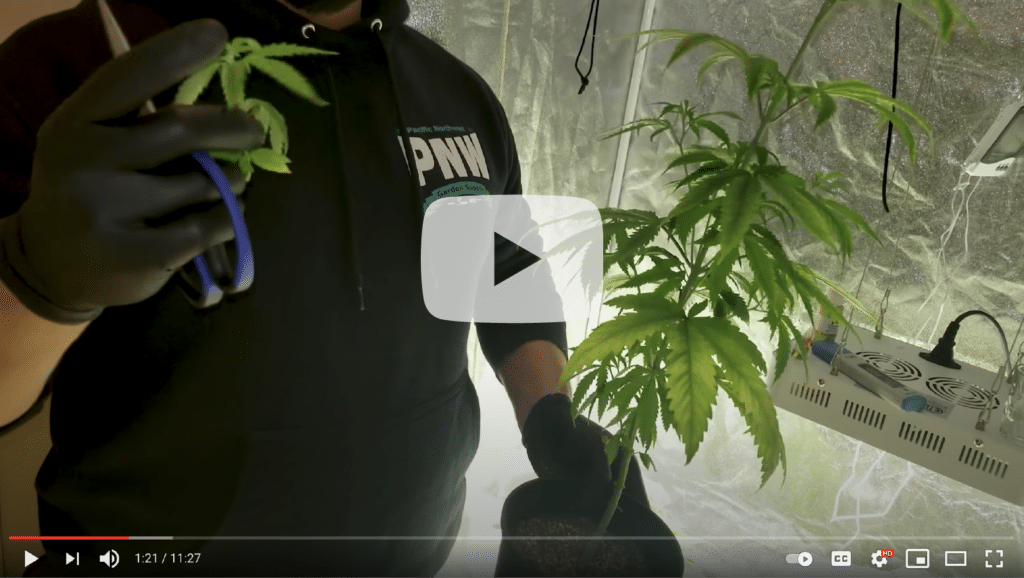
Plant Definitions
Flowering Leaf
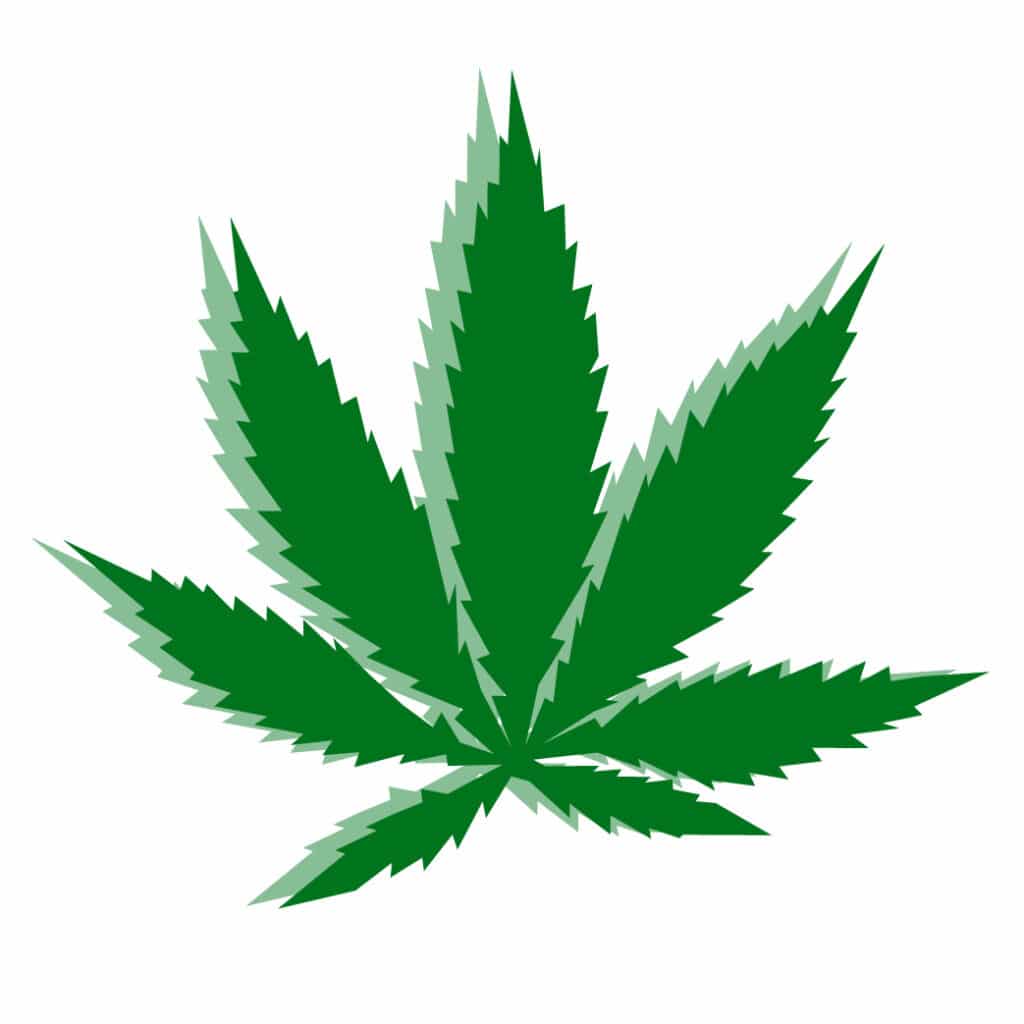
Flowering leaves can be described as smaller, lighter leaves that grow close to the shoots and stalks of cannabis plants. Unlike other leaves, flower leaves will be the first to exhibits signs of flowering growth. Flowering leaves can be removed during the following shaping techniques: lollipopping, pruning.
See fig. 1 for our illustration of a flowering leaf.
Fan Leaf
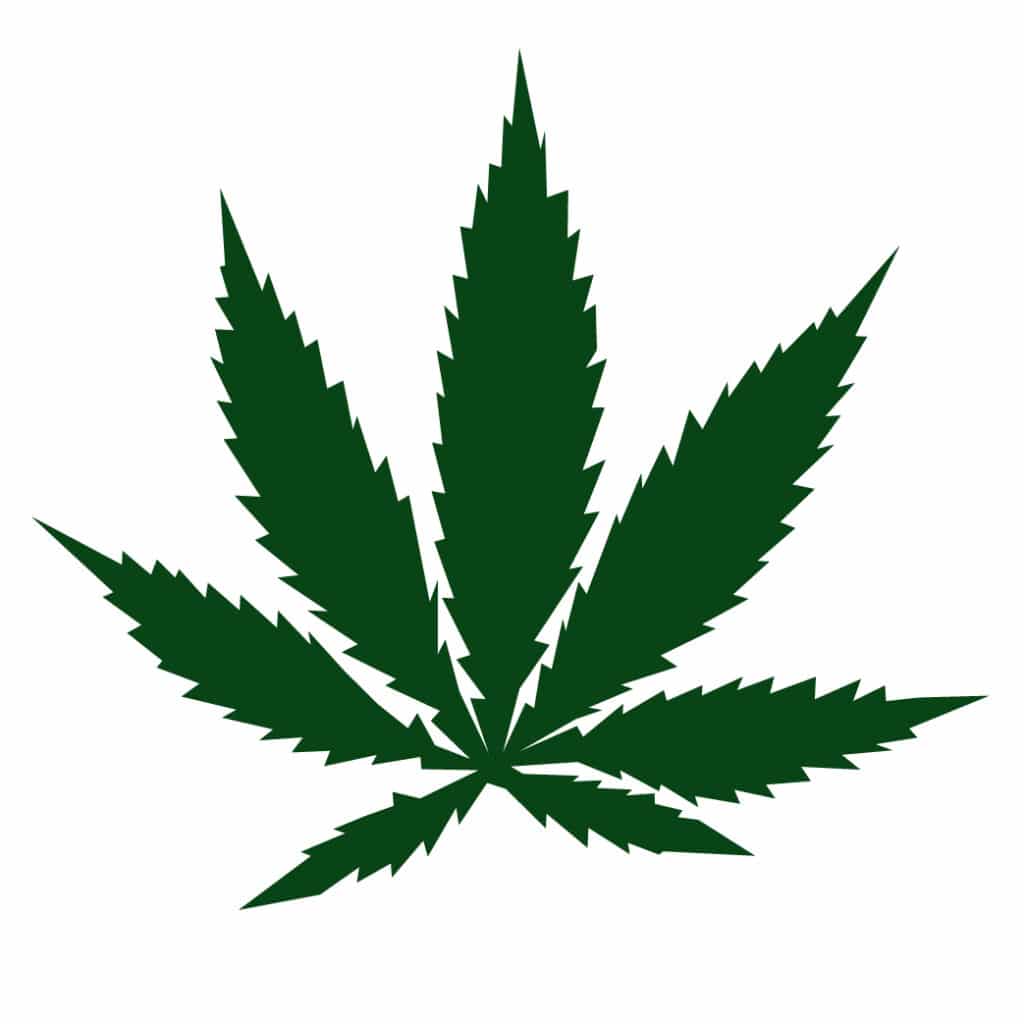
Fan leaves are large, broad leaves that act as a plant’s “solar panels”. Fans leaves are also known as shade leaves because they are often so large that they can shade or block access to light and air from other parts of the plant. Fan leaves can be removed during the following shaping techniques: lollipopping, pruning.
See fig. 2 for our illustration of a fan leaf.
Top Flowering Leaf
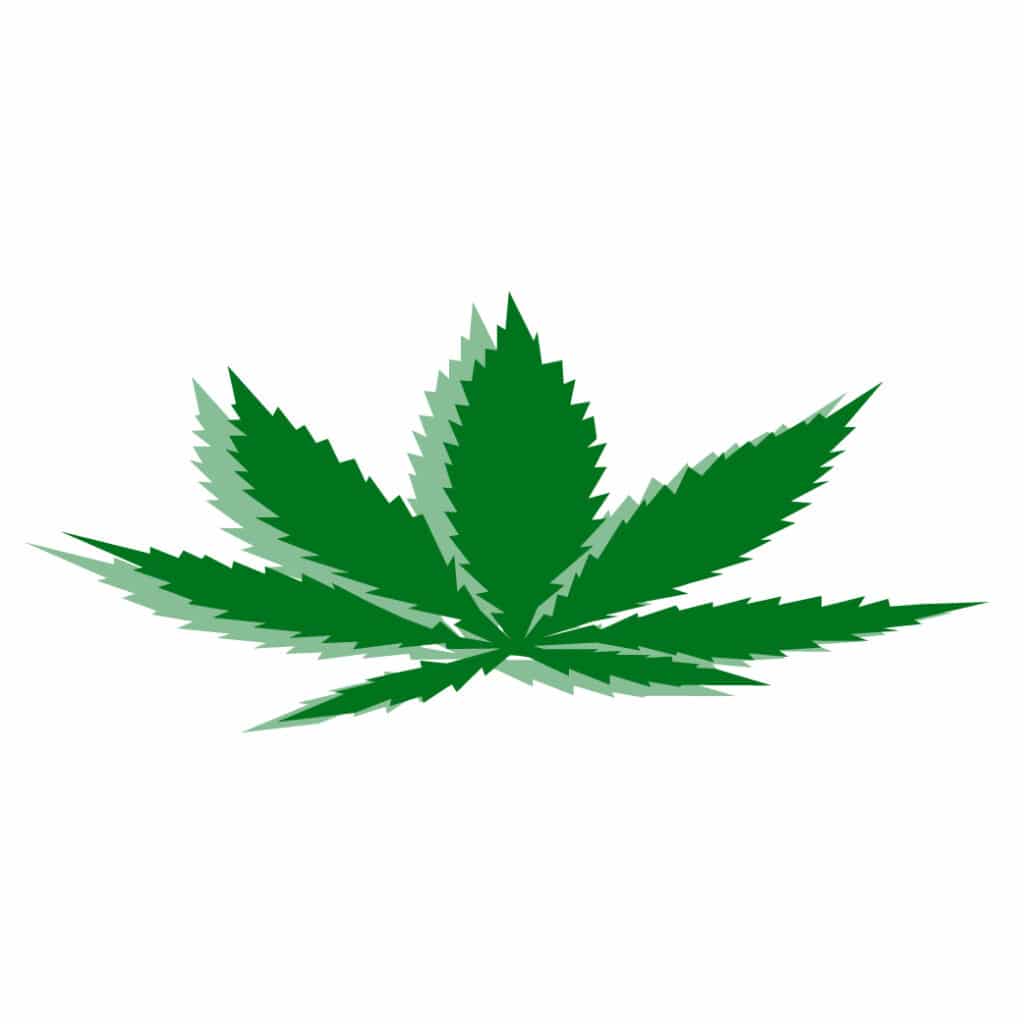
Top flowering leaves are the site of new, vertical plant growth. Quite possibly the most important part of a cannabis plant, the apex of a flowering leaf will later express a large flower called a “cola”. Top flowering leaves can be topped to multiply the number of future colas.
See fig. 3 for our illustration of a top flowering leaf.
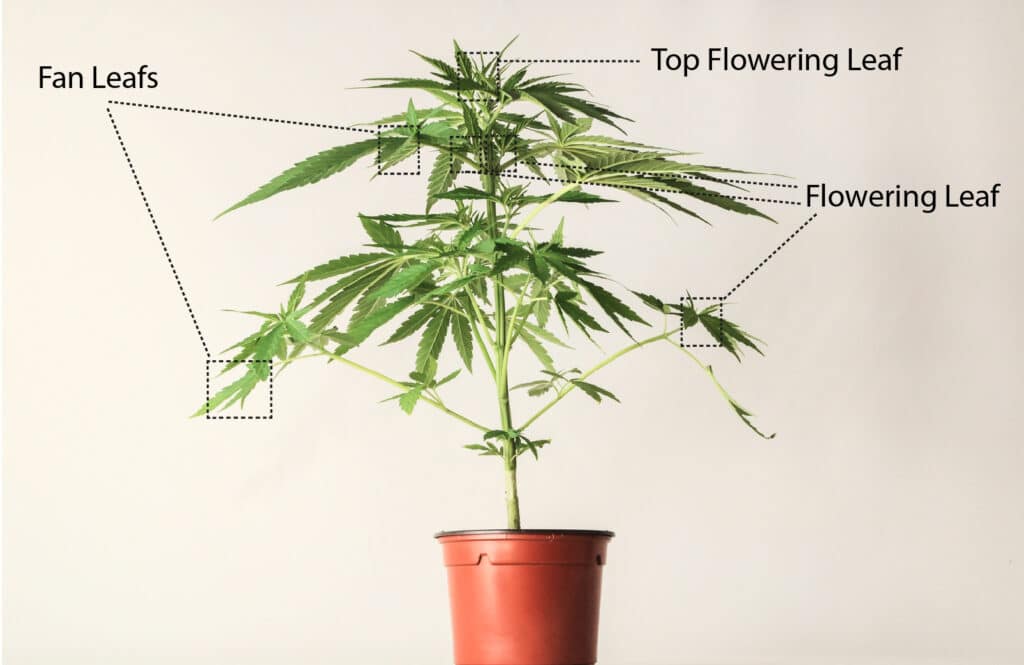
Why Shape Cannabis Plants?
Growers typically shape their plants to influence healthier, higher-quality growth. The process of shaping involves removing select plant material to open up avenues for new growth. Pruning, for example, is the act of removing older growth to increase light penetration, airflow, and nutrient/hormone redirection. By removing old growth like small branches or large fan leaves, and lower quality plant material you can:
- Redirect nutrients, water, and hormones to future buds sites.
- Increase light intensity and light penetration.
- Increase airflow in areas vulnerable to pests, pathogens, and unproductive growth.
3 Different Shaping Techniques
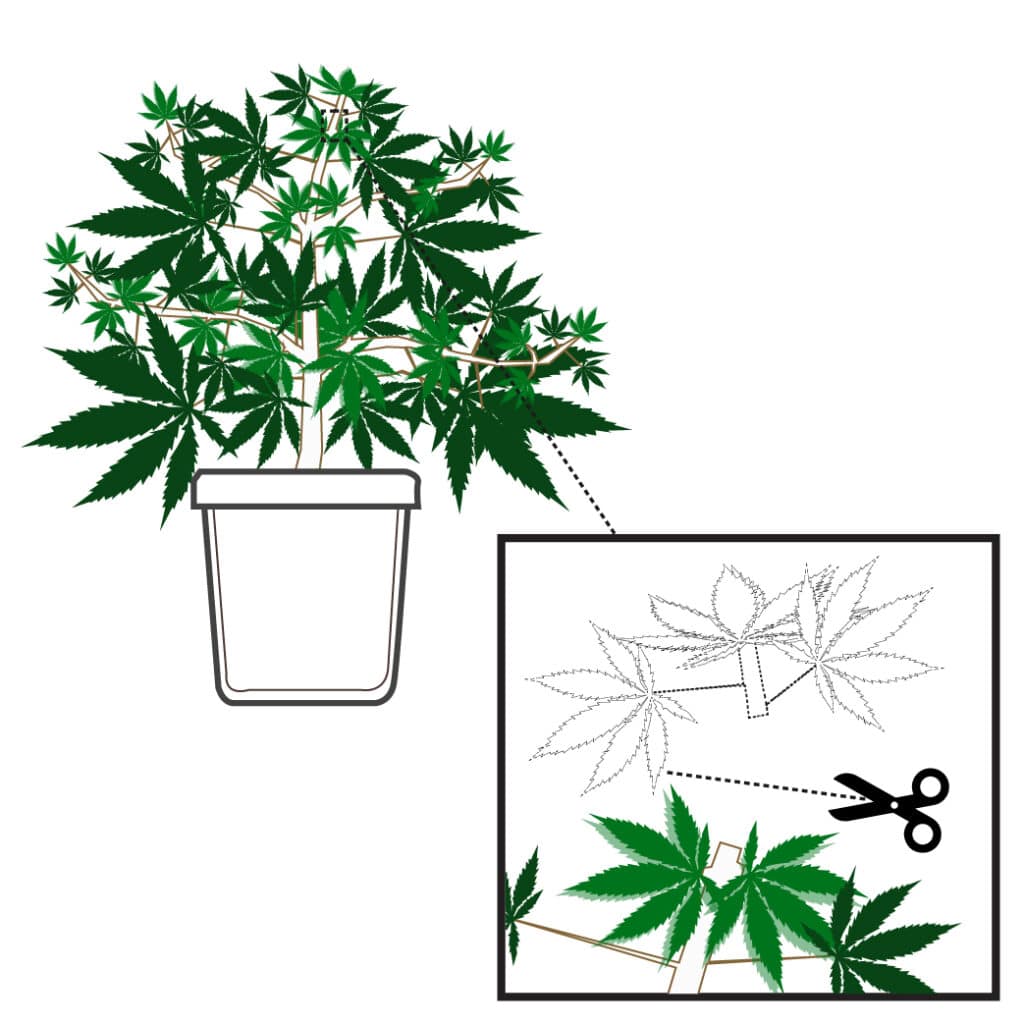
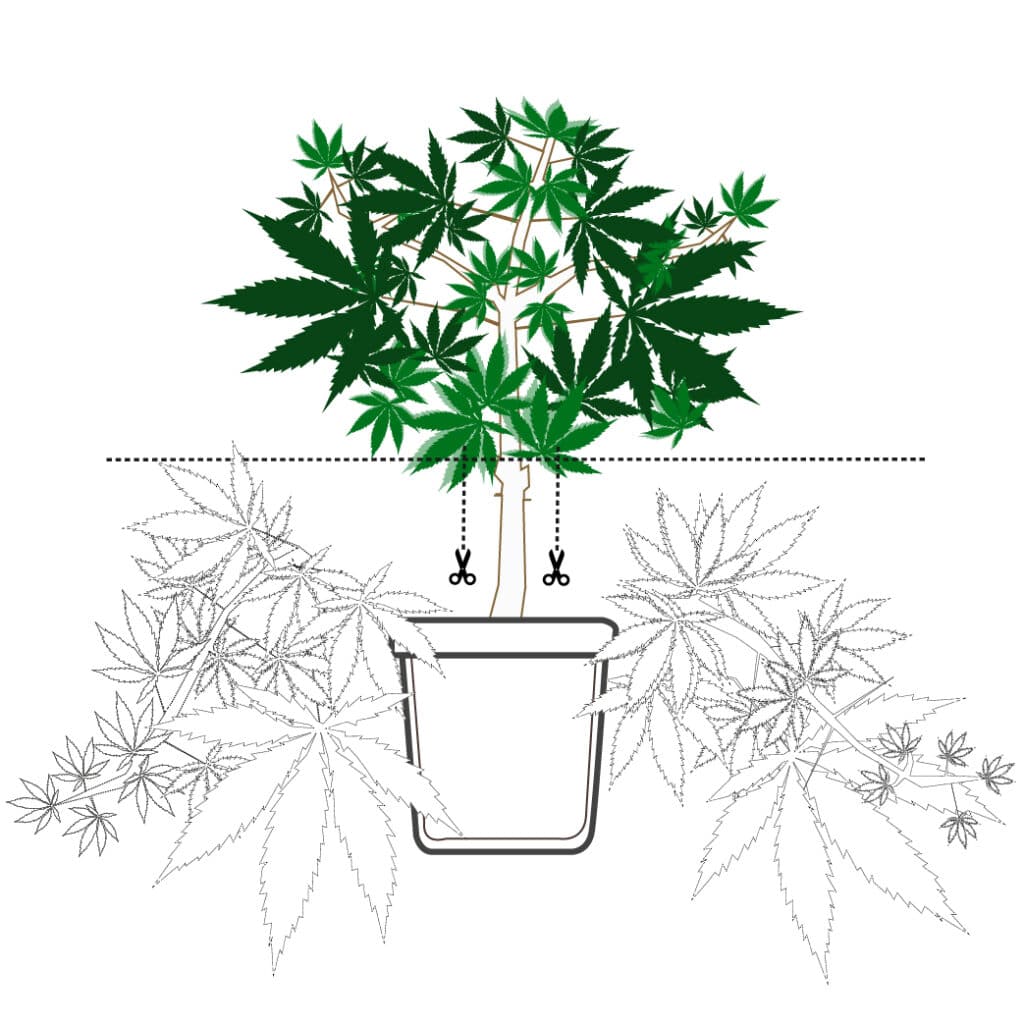
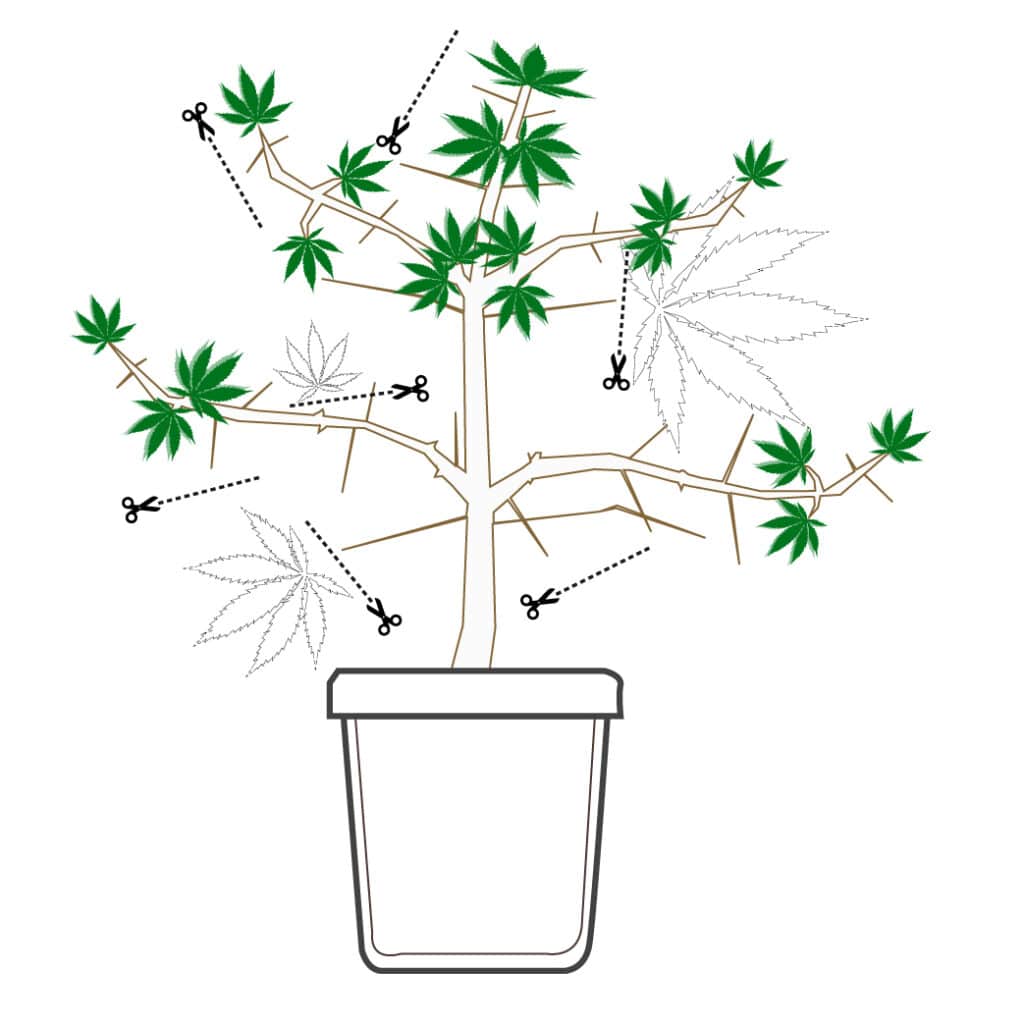
Sanitation & Sterilization of Equipment
Before we can start the shaping techniques, it’s good practice to get your sanitation & sterilization process down to a tee. Each process will require you to perform this action before cutting/trimming for the most optimal results.
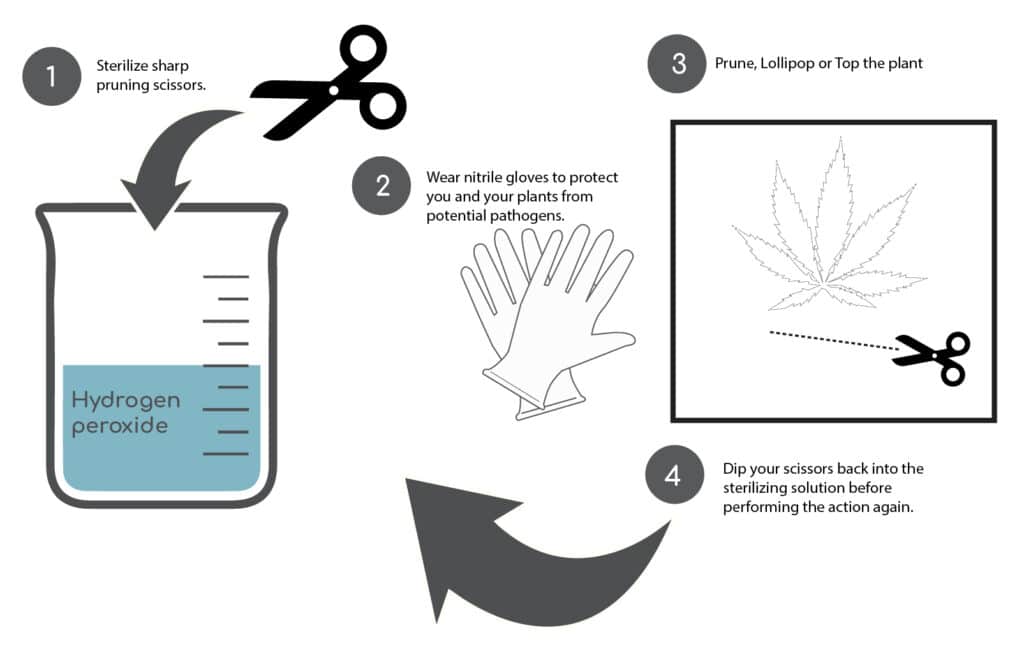
Technique #1: Topping
Topping is the process of removing the top node of a plant to influence two new tops. If untouched, most cannabis plants will grow like Christmas trees, with a primary cola at its apex, and many lower grade flowers below. However, if correctly topped, your plant will grow like a candelabra. The point of topping is to influence future primary colas during the flowering period; however, it’s necessary to attempt this technique during the vegetative stage to allow time for your plants to repair themselves before entering the flowering stage. Also, cannabis plants can be topped more than once – every time they are topped, the number of potential colas will multiply by two. Let’s look at some simple steps to ensure successfully topping:
Step #1: Examine Your Plants for a Topping Point
A successful top should influence the growth of two or more new tops. However, before you commit to a cut, examine your plants for a topping point where two new tops intersect. Keep in mind that plants can be topped more than once. So, do not cut off more than ½ of a plant’s total height. In short, the less you remove, the faster new growth will return as established, healthier plant material. So, attempt to top only the first or second node of apical growth. Also, if you’re topping your entire crop, try to pinpoint the same topping point across the garden. This will ensure that all your plants will mature and grow at the same height.
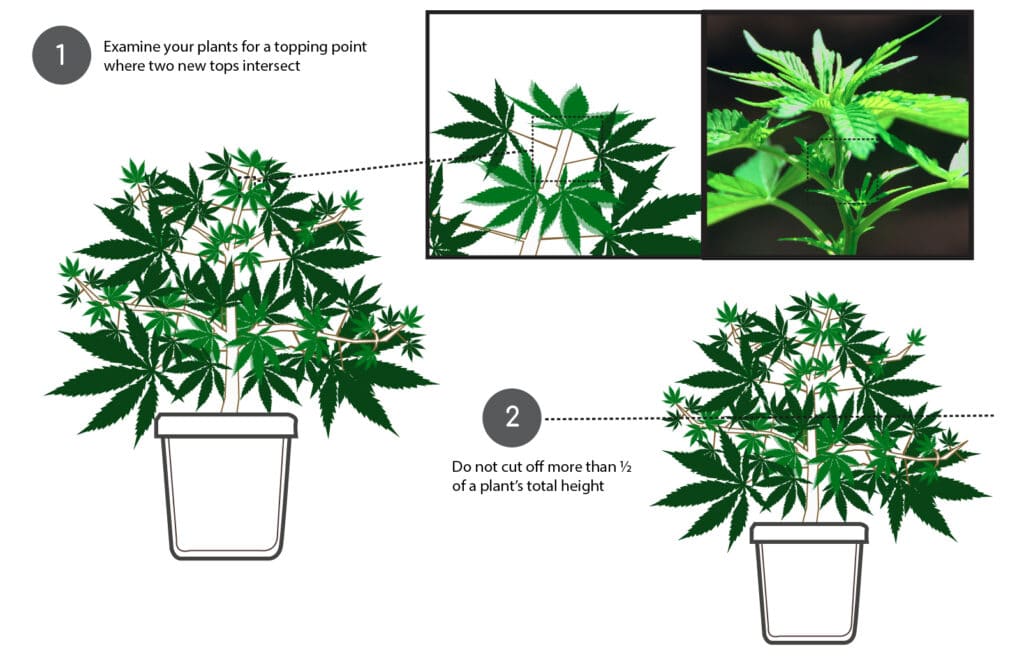
Step #2: Top Your Plants
After examining your plants for a topping point, it’s time to make your cut. Use sharp pruning scissors that have been sterilized with alcohol or high strength hydrogen peroxide to avoid fungal or viral infections. And, be sure to wear nitrile gloves to protect you and your plants from potential pathogens. Once prepared, cut the apical and appropriately intersecting top from your plant. Dip your scissors back into the sterilizing solution before storing them, or when moving from plant to plant. In a few days, two new tops will emerge from the stump that remains on your plant’s highest point.
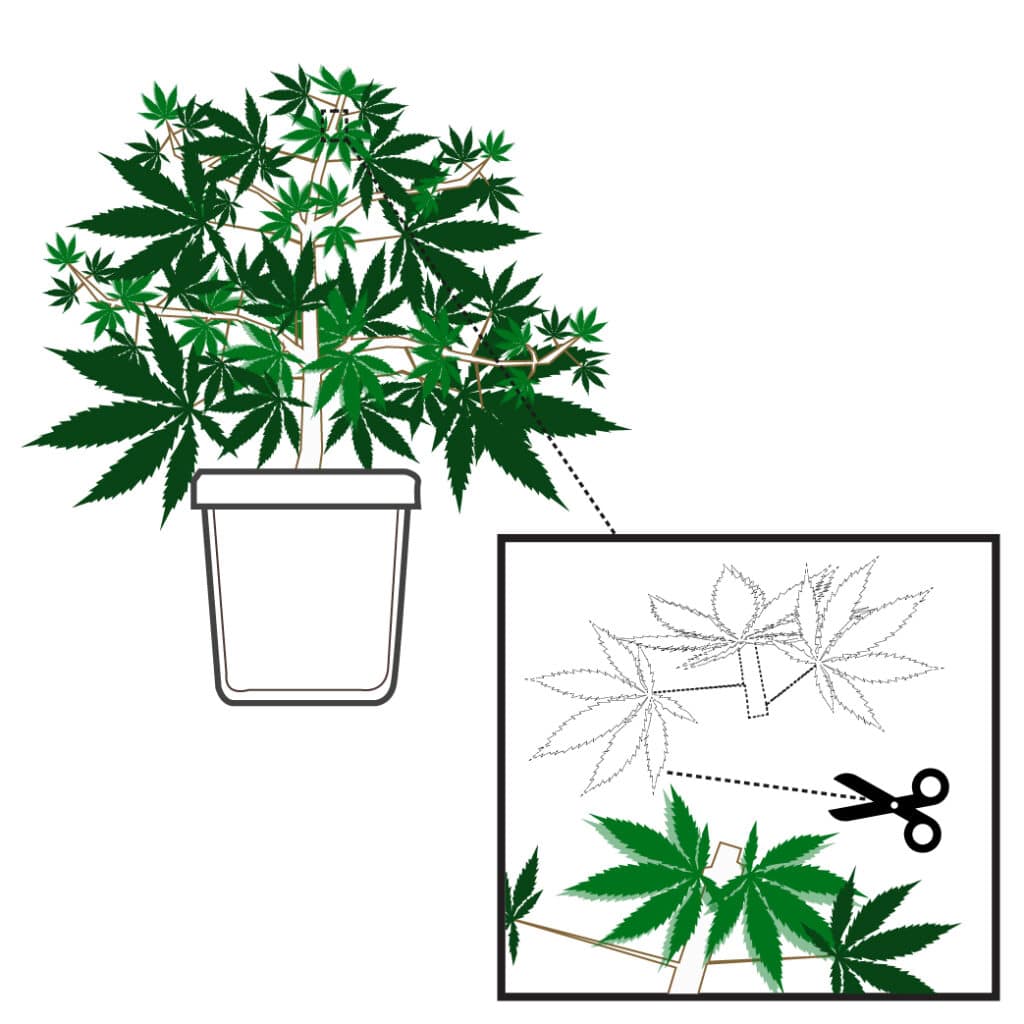

Technique #2: Lollipopping
Lollipopping is a term used to describe the removal of the lower ⅓ of plant material from the stalk. As the name suggests, your plant will resemble a lollipop once pruned, with a clean bottom stalk and a bushel of green, healthy growth on top.
But what’s the benefit of shaping plants this way? First, lower growth can act as a highway for root-breeding pests. Any growth that is remotely close to the soil/medium is a potential hazard and may influence and exaggerate the prevalence of harmful pests that breed in the soil but feed on leafy plant material. Second, lower growth is also known as “unproductive” growth. Due to the lack of light and airflow, lower growth will likely yield soft, small flowers once mature. So, if you want to influence the movement of nutrients/hormones away from unproductive growth and onto productive material like flowering tops, lollipopping your plants may be a good solution. Let’s look at the process of lollipopping your cannabis plants:
Step #1: Examine the Bottom ⅓ of Your Plant
Not all plants are candidates for lollipopping. Typically, the best plants to undergo this shaping process will be large, tall, or bushy, and in need of a general clean-up. Since you’ll be removing the bottom portion of your plant’s foliage and shoots, briefly examine the areas you’ll be cutting. Lollipopping can also be stressful for plants. So, try to make the process as easy as possible by moving quickly with sharp, sterilized scissors.
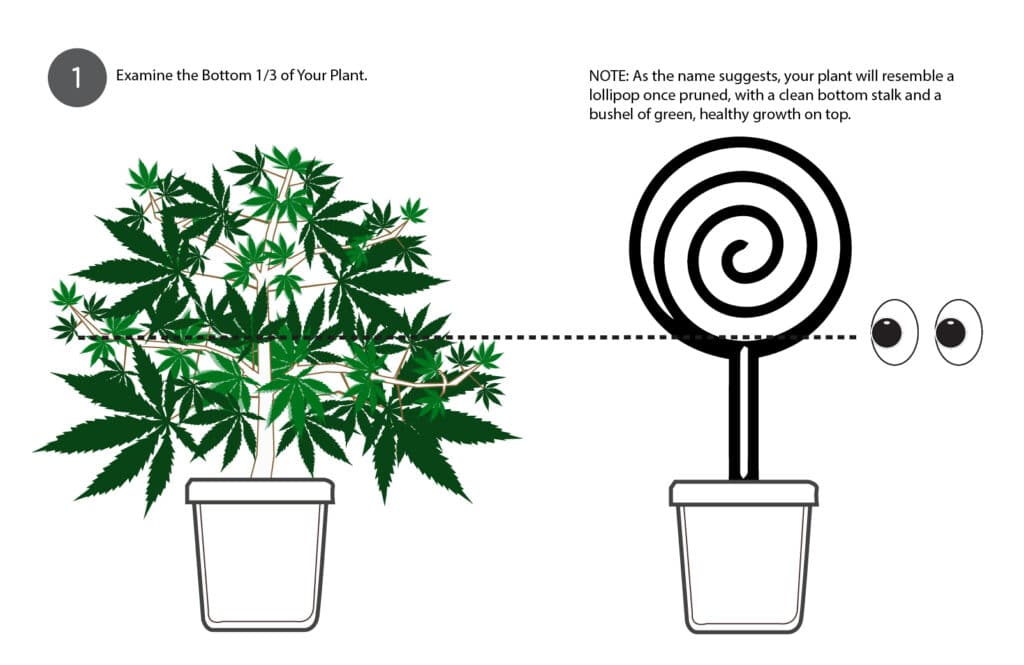
Step #2: Lollipop Your Plants
Once you’ve examined your plants, it’s time to remove the bottom ⅓ of foliage from your crop. When cutting, attempt to remove the lower plant material as close to the stalk as possible, without damaging the stalk itself. Once finished, your plants will resemble a lollipop from any side profile view, but they will still be bushy and full of growing tops. Soon your plants will repair from the stress of lollipopping and all the stored energy that was being directed to stabilizing this lower growth will be supplemented to the production of new tops.

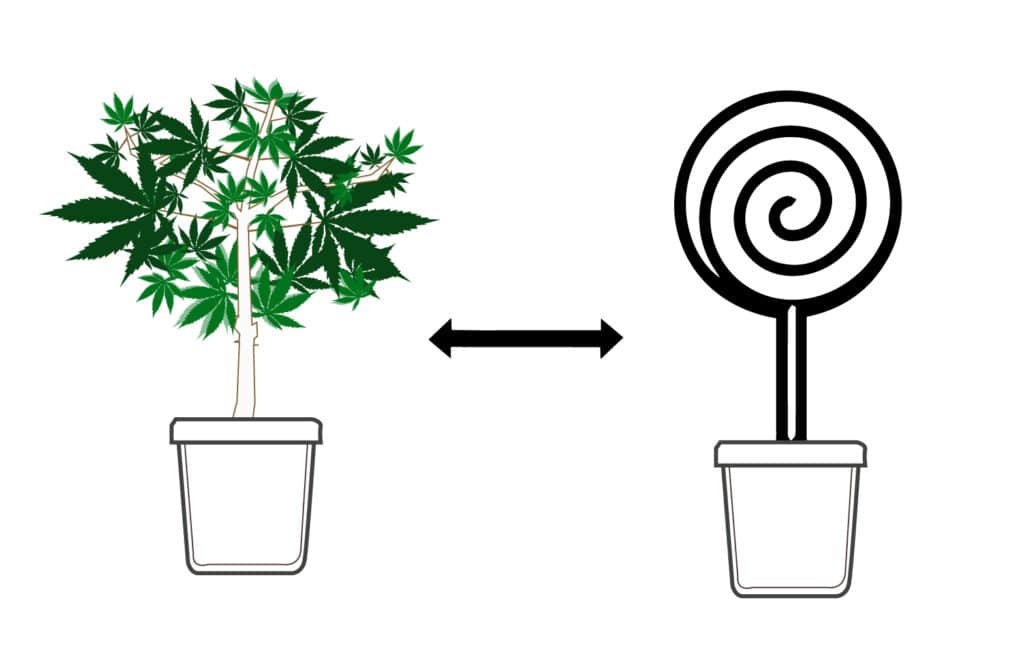
Technique #3: Pruning
Pruning is the action of removing excess plant material that prevents light intensity and airflow. Some plants can be extremely bushy and grow internally instead of branching out laterally. It’s important to clear excess plant material from inside your stalk to open up more productive growth to light and air.
So, how can you tell if you need to prune your plants? If you can’t see through the mid-section of your plant, or, you notice many overlapping fan leaves, it’s probably time to prune your vegetative plant. Pruning a cannabis plant can include the removal of older, lower growth, internal shoots, branches, large fan leaves, and unproductive, smaller growth. Just like all shaping techniques, it’s important to prune your plants before the production of flower sites to avoid damaging potential colas. Let’s look at more information on how to prune your cannabis plants:
Step #1: Examine Your Plants
Plants in need of a prune will be extremely bushy – try to avoid pruning thinly stacked plants that already have sufficient access to light and airflow. Unfortunately, there is no guideline on how much to prune your plants. This issue can lead to new growers getting carried away and “over-pruning” their plants. So, if you’re unsure about how much to prune, be conservative in your efforts during this process.
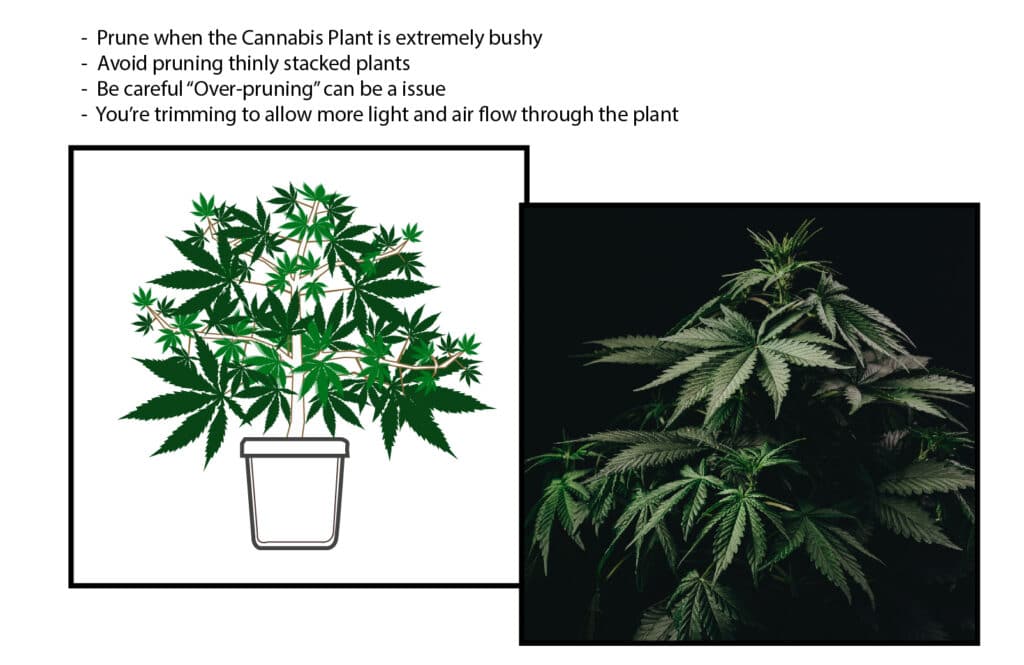
Step #2: Begin Pruning
Start at the bottom and work your way up and around the plant, removing any accumulated or excess plant material. Like all other shaping techniques, the goal of pruning is to influence future plant growth in the most productive places possible. However, if you feel that some bottom or lateral growth will be beneficial to your plant in the future, keep it rather than pruning it away. For the best results, use sterilized scissors and gloves, and re-sanitize your equipment as you move from plant to plant. Soon your plants will be fully shaped and be ready to produce only the finest flowers.
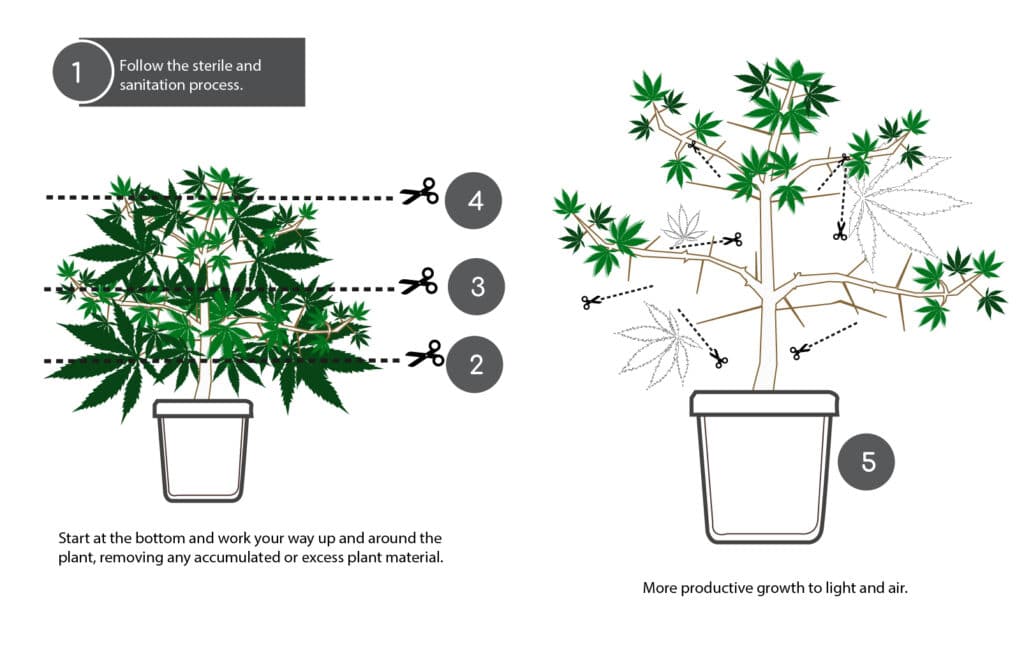
Other Tips and Considerations
Not All Plant Need to be Topped, Lollipopped, and Pruned
Topping, lollipopping, and pruning your plants all at the same time can be harmful to the natural growth patterns of your crop. Some plants may not even need to be heavily pruned or lollipopped during the vegetative stage at all. So, use your best judgment to determine the need for this process – sometimes, only a minor amount of defoliation is needed to ensure sufficient air and light intensity.
Plant Shaping is Stressful
The process of cutting off excess plant material can be stressful for plants. Luckily, there are ways of preventing plant stress. Foliar feeding B1 vitamins or feeding kelp extract to the root zone are two ways of managing plant stress. Both supplements contain plant hormones like auxins and gibberellins that help plants manage stress and tissue damage. For the best results, foliar feed your plants with at least one of these supplements 24 hours before shaping or pruning your crop.

Congratulations on growing cannabis at home! Join us for more information about growing cannabis at home. For more tips on topping, lollipopping, and pruning your crop, contact our team at Grow Your Four.
Buy The Items Mentioned in this Blog:
Read More
- Tips on Curing Homegrown Cannabis
 After your cannabis is dried and processed, it’s time to think about curing, burping, and re-humidifying your crop to the perfect smoking and vaping consistency.
After your cannabis is dried and processed, it’s time to think about curing, burping, and re-humidifying your crop to the perfect smoking and vaping consistency. - How to Trim Cannabis to Perfection in 7 Easy Steps
 It’s true – trimming cannabis is one of the most monotonous jobs in the garden. But much the like process of knitting handmade fabrics, hand-trimming
It’s true – trimming cannabis is one of the most monotonous jobs in the garden. But much the like process of knitting handmade fabrics, hand-trimming - Grow Your Four’s Guide to Harvesting and Drying Cannabis
 By the end of week 8, your plants will likely be ready for harvest. Harvesting cannabis involves the important process of carefully drying plants to
By the end of week 8, your plants will likely be ready for harvest. Harvesting cannabis involves the important process of carefully drying plants to

